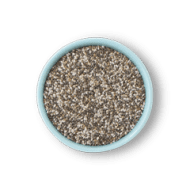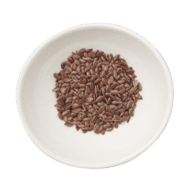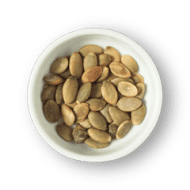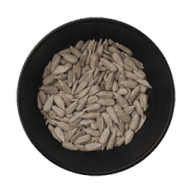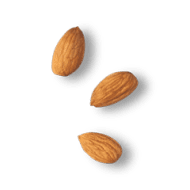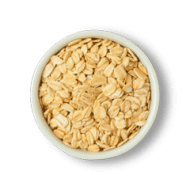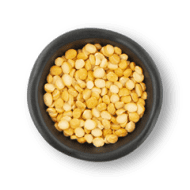Homemade Protein Powder
Protein, derived from the Greek word ‘protas’ meaning ‘of primary importance, is a critical nutrient in maintaining a healthy body. It helps in muscle growth, hair growth, repairing tissues, antibodies functioning, and more. Often, meat is considered the source of protein, but there are plenty of other protein sources available. Certain plants are excellent sources of protein with lower calories. Whey protein is another source of protein that is derived from byproducts of cheese manufacturing.
How much protein a person requires depends on your age, weight, activity level, and health requirements. However, it is recommended for adults to have 1.2 to 2.0 grams per kilogram of body weight. Most of this can be attained through diet itself, but in today’s day and age, it has become difficult to attain all nutritional needs from food alone. Therefore having a homemade protein powder is handy to give your body the necessary protein boost it needs.
What is Protein Powder?
Protein powder is made by extracting protein from plant or animal-based sources. Naturally occurring carbohydrates, minerals, fats, fibers are removed while supplementary nutrients and even sweeteners may be added. This is where homemade protein powder comes with a positive light. You know what you are adding to the powder and can be sure of its safety.
Origin
Goal-oriented eating was followed by athletes and soldiers for a long time. They needed instant and easy to make concoctions to meet their health and nutritional needs. This created a boom in the supplement market.
Irvin Johnson, a bodybuilder, and scientist discovered the first dissolvable protein powder made from milk and eggs. Then more discoveries were made, which also led to the discovery of plant-based protein powders.
By understanding the basics of food nutrition, you can make your very own protein powder at home. You can tweak it to your needs. For example, you can make homemade protein powder for weight gain or weight loss. It doesn’t have to be in powder form alone. You can also make protein-rich foods that are animal-based or plant-based, like
protein-rich sprouts bhel,
high-protein bean burger sandwiches, homemade protein smoothies, etc.
Tips and Tricks
The advantage of making your own homemade protein powder is that you can tweak it to your nutritional requirements.
You can use dates, agave syrup, honey, etc., to sweeten the protein shake.
The addition of fruits and veggies can also amplify the taste and nutritional benefits.
It can also be used as a flour substitute in the making
pancakes, waffles, crepe, etc.
If you are a diabetic patient, you can avoid adding fruits and sweeteners to your homemade protein shake.
In short, this plant-based homemade protein powder is a healthy and preservative-free version to boost your protein shake. You can try this without worry and side effects while reaping the numerous benefits of the ingredients.
Why Protein Powder?
Protein is an essential nutrient that helps in muscle growth and repairing tissues.
Protein intake helps you feel full and therefore enables you to go long hours with food intake. This is good news for those of you who want to shed weight.
It helps in healthy weight gain because you grow muscle mass instead of fat.
Protein is said to improve the quality of sleep.
Bowel movements are better.
Improves the overall health of the gut.
Is it possible to make protein powder at home?
Yes, with a little understanding and guidance about the nutritional values of different food items, you can make your own protein powder at home. For example, you can make them like this:
Animal or plant-based – Animal-based protein powder will have a base of powdered milk or whey. Plant-based protein powders are lentil-based.
Homemade protein powder for weight gain – Protein powders, as mentioned earlier, helps in healthy weight gain; you tend to grow muscle mass.
Homemade protein powder for weight loss – Protein intake helps you feel full for longer periods which will help in the decrease of calorie intake.
Just as a supplementary - Protein powders can be taken as supplements to regular food intake. This is especially good for children who may be fussy about their food intake.
How to make Homemade Protein Powder for adults
Here is a quick plant-based protein powder to whip up for adults. You can make about 16 servings with the ingredients given here, and it is very easy to make.
Chia seeds – 0.25 cups
Chia seed is a famous superfood with high protein content. They are small black seeds from a plant called Salvia Hispanica, which comes from the mint family. They were used in the Mayan era, and the actual word ‘chia’ means ‘energy’ in Mayan. It was recognized for its importance only recently. It is high in fiber content and contains calcium, manganese, magnesium, phosphorous, zinc, potassium, Vitamin B1, B2, and B3. They are low in calories and gluten-free too. It is loaded with antioxidants which fight free radicals that damage cells and cause diseases like cancer. It contains 14% protein that is high compared to many plants. The high fiber content aids in healthy digestion while improving the absorption of nutrients. It helps to feel full, which limits the intake of more food helping in weight loss.
Flax seeds – 0.33 cups
Omega-3 fatty acids and protein are the main reason why flax seeds are most sought out for. It also has antioxidant qualities and is said to have protective properties against cancer. They are small brown seeds that come from the flax plant. Their seeds taste nutty and can be eaten raw or pressed to produce oil. Its high fiber content helps with problems like constipation. It helps to feel full longer, aiding in weight loss. It is known to lower cholesterol improving heart function and blood circulation. It is also said to help with insulin sensitivity improving blood sugar levels. In addition, it reduces hot flashes and other symptoms women face during menopause.
Pumpkin Seeds – 0.5 cups
Pumpkin seeds are antioxidant rick - especially with carotenoids and vitamin E. It reduces inflammation and protects cells against free radicals. Pumpkin seeds have a very high magnesium concentration that helps control blood pressure, reduce heart disease risk, maintain healthy bones, and regulate blood sugar levels. It is rich in zinc that is said to improve sperm count. It contains a type of protein called tryptophan that improves sleep. Again, these seeds are also rich in fiber that improves digestion and aids weight loss. Eating these can solve many nutritional deficiencies, protect your body from various diseases, and improve mood, energy, and immunity.
Sunflower seeds – 0.33 cups
Sunflower seeds are rich in protein, fiber, and good fat. They are choke-full of vitamins like Folate, Thiamine, Pantothenic acid, Choline, Riboflavin, and Vitamin B6, C, and E. They contain minerals like magnesium, phosphorus, iron, calcium, sodium, potassium, zinc, etc., that maintain the body’s immune system. They also contain antioxidants that help the body fight against diseases. It is known to reduce cholesterol and high blood pressure levels, improving heart function. They also aid in maintaining blood sugar levels. Vitamin B6 found in sunflower seeds helps boost brain function like memory, concentration, and mood. The rich protein and fiber content aids in digestion, weight loss, and muscle strength.
Almonds – 0.25 cups
It’s no secret that almond contains truckloads of nutrients. This yummy nut has antioxidant properties that help fight against diseases. It helps control blood sugar levels. The magnesium content in almonds helps control blood pressure levels. Almonds are known to reduce cholesterol levels in the blood. The fiber content helps in digestion by improving bowel movements. It aids in weight loss by helping to feel full for longer periods. The properties of nutrients in almonds help in the healthy functioning of the heart. Almonds also contain magnesium, copper, calcium, manganese, vitamin K, and zinc, contributing to healthy bones.
Oats – 0.5 cups
Oats have been considered a healthy food for a long time. The high fiber content helps you feel full for a longer period of time, aiding in weight loss. It also helps in easy bowel movements. The antioxidants found in oats prevent free radicals from damaging cells, hence preventing heart diseases. Oats help to maintain healthy blood sugar and pressure levels. They contain protein and healthy fatty acids that benefit general good health. In addition, they contain a lot of minerals and vitamins that improve immunity.
Chana Dal – 0.25 cups
Chana Dal or Bengal grams are baby/split chickpeas. They have blood sugar and pressure balancing properties. The high protein content helps in building healthy muscles and improving the immunity of the body. The calcium content in Chana dal helps in bone health. The high fiber in chana dal helps in aiding digestion. It also helps to feel full longer, aiding in weight loss. It has anti-inflammatory property which makes it essential in treating inflammation. It contains B-complex vitamins like B1, B2, B3, and B9 that play a vital role in healthy metabolism. In addition, it contains zinc which is good for the skin and eyes.
Step 1 - To prepare the easy homemade protein powder, preheat it at 160 degrees C for 10 minutes if using the oven. Spread the almonds on a baking tray and toast them in the oven for 4-5 minutes. If using a stove, pan roasts them dry on a low flame until the nice nutty aroma is emitted. Take care not to burn.
Step 2 – Roast the flax seeds along with pumpkin seeds, sunflower seeds, and oats separately in a pan on low flame. Take care not to burn. They are roasted independently because of the different cooking times each ingredient takes. Let all the roasted ingredients cool down on an open surface.
Step 3 – Combine all the ingredients in a blender and grind to a fine powder. Make sure the blender is moisture-free to avoid decaying the powder.
Step 4 – Transfer the powder to an air-tight container and use it as required. Make sure to keep the container moisture-free to preserve the powder for the long term. Use a dry spoon to scoop out the powder when using.
What is a good substitute for protein powder?
You can have protein-enriched meals instead of protein powders.
Protein-rich sprouts – You can sprout various beans like green gram, Bengal gram, kidney beans, etc., to make it loaded with proteins and use them in salads or stir-fries.
Lentil-based dishes – Lentil soups and curries are an easy way to include protein-rich ingredients in your diet.
Foods enriched with nuts – Mixtures made from nuts or sweet shakes made from nuts are easy to include protein in your diet.
Meat – Lastly but not least, all kinds of meat are a good source of protein.
What ingredients are good in protein powder?
Food items like lentils, nuts, Chia seed, Flax seeds, etc., are all good to start making protein powder at home. These provide a good base to make protein shakes and smoothies. They can also be added to other recipes to make them protein-rich.
Advantages of Homemade Protein Powder
When you make your own protein powder at home, you get to know what ingredients go into it. It is safe and preservative-free. You can tweak the powder according to your own taste and dietary needs. You can even give them to kids for their protein needs.
Types of Gyms by cult.fit



